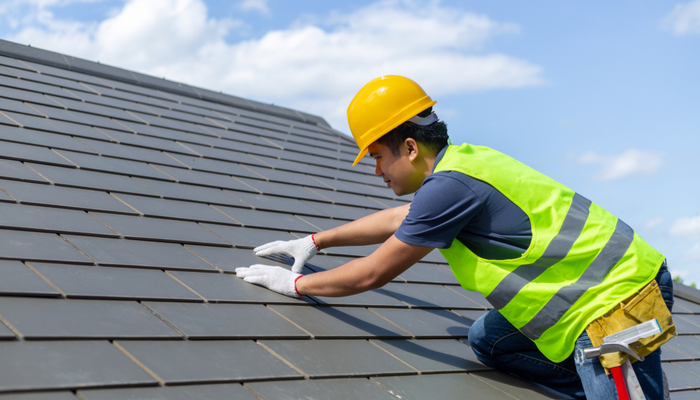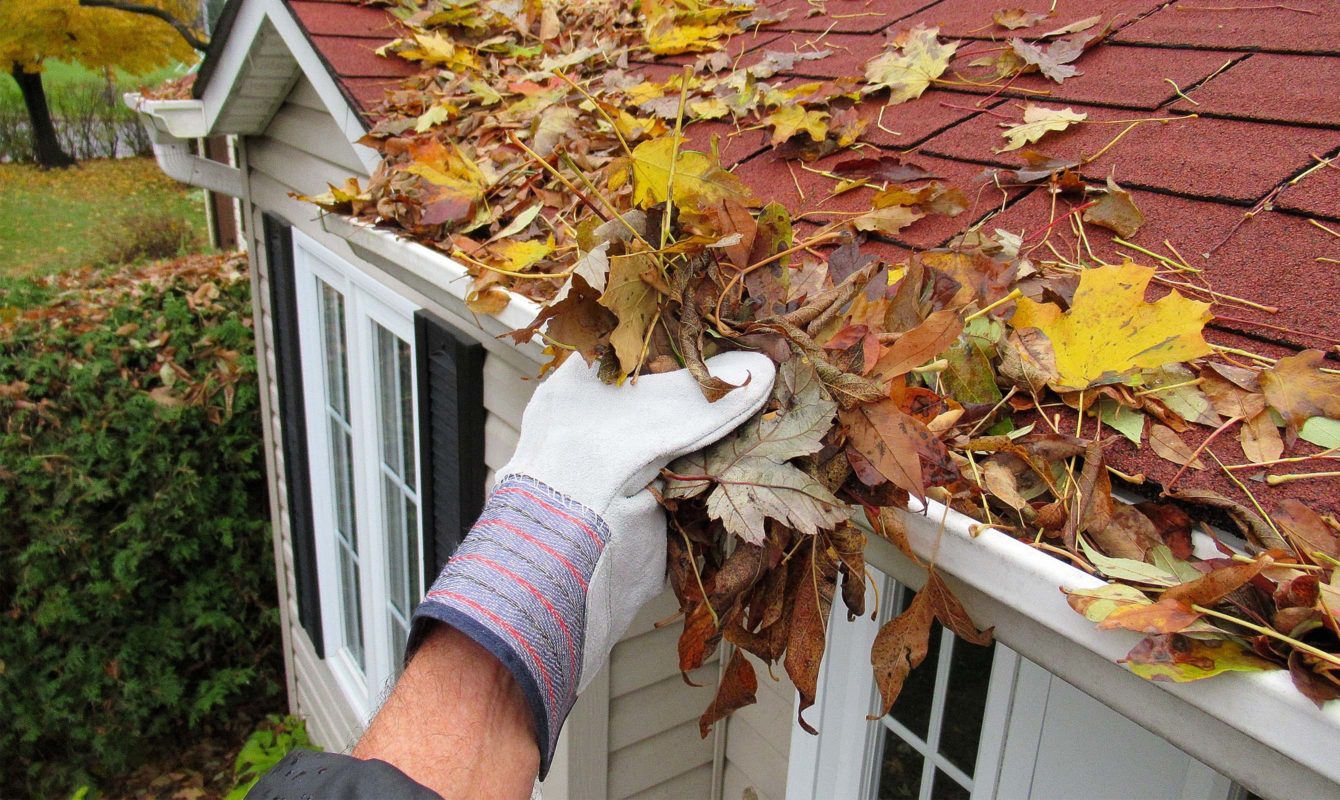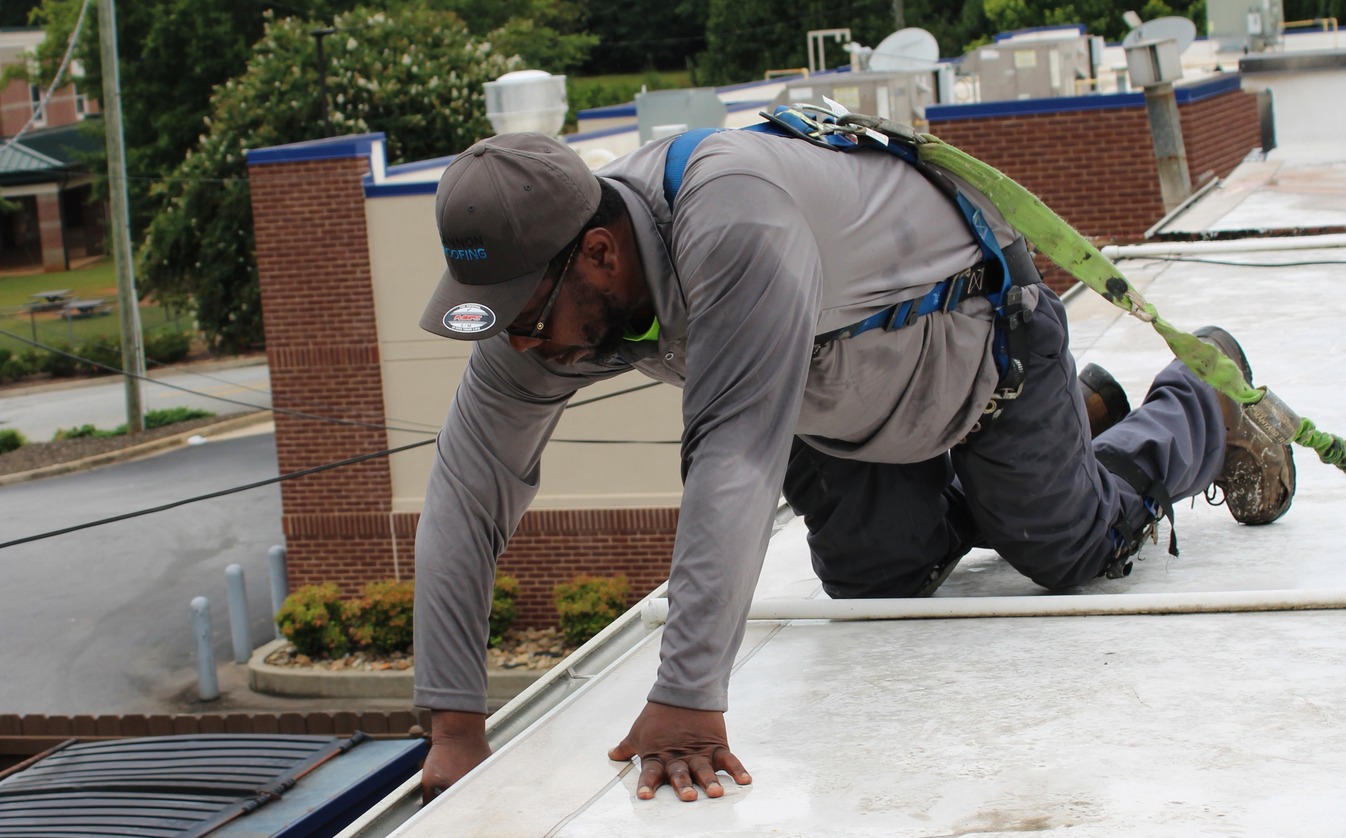Necessary Tips for Effective Roof Maintenance From Leading Roofing Experts
Preserving a roof is vital for the longevity of a home. Leading roofing experts worry the importance of regular inspections to catch problems early. Furthermore, appropriate upkeep practices can avoid expensive fixings down the line. Home owners frequently ignore basic tasks that add to a roofing's wellness. Comprehending these necessary pointers can make a significant difference. Numerous may wonder what specific methods are most efficient.
Routine Assessments: Secret to Early Trouble Detection
Several house owners may ignore their roofings, regular examinations play a vital role in identifying possible issues prior to they escalate right into expensive repairs. A detailed evaluation can disclose signs of wear, such as missing out on shingles, fractures, or rusted blinking. These seemingly small problems can cause significant leaks, architectural damage, or mold development if left unaddressed.
Experts suggest performing assessments at the very least twice a year, preferably in the spring and autumn. This aggressive strategy allows property owners to capture issues early, guaranteeing the long life of the roof. Furthermore, after severe weather condition occasions, such as tornados or heavy snowfall, an assessment is essential to analyze any resulting damage. Routine assessments not just enhance the roofing system's life expectancy yet likewise supply peace of mind, knowing that the home is well-protected. By prioritizing this element of upkeep, property owners can stay clear of unforeseen costs and keep the honesty of their residential property.
Maintain Gutters and Downspouts Clear
Routine maintenance of rain gutters and downspouts is crucial for stopping water damages to a home. Stopped up seamless gutters can bring about overruning water, which might harm the foundation, roof covering, and home siding. To maintain peak feature, home owners need to consistently check and clean gutters, particularly during fall when leaves and debris collect.
Using a sturdy ladder, individuals ought to remove any kind of obstructions, guaranteeing that water streams freely through the system. It is suggested to inspect downspouts for blockages too; a blocked downspout can create water to back up and overflow.
In addition, house owners need to verify that gutters are firmly attached and effectively sloped to guide water toward downspouts. Installing rain gutter guards can also aid lessen debris accumulation and decrease upkeep frequency. By maintaining gutters and downspouts clear, home owners can safeguard their home from pricey water damage and extend the life expectancy of their roof covering system.
Trim Overhanging Branches
To guarantee the long life of a roof, home owners ought to focus on cutting overhanging branches that present a risk to their roof. Branches can create significant damages with numerous means, including direct call during tornados or hefty winds, which may cause scrapes or punctures in roof materials. In addition, looming branches can facilitate the growth of moss and algae, as they offer color and moisture retention, jeopardizing the roof's integrity.
On a regular basis assessing the range between tree limbs and the roof covering is crucial. House owners ought to aim to maintain a safe clearance of at the very least six feet to minimize possible hazards. Utilizing professional tree solutions can guarantee risk-free and proper trimming, stopping accidental damages to the home. By proactively taking care of tree development, home owners can safeguard their roofings, improving their life expectancy and minimizing future maintenance expenses. Finally, routine branch trimming is an integral aspect of efficient roof covering maintenance.
Look for Signs of Damage
Inspecting a roof for indicators of damages is critical for keeping its structural honesty and durability (Roof Repair). Home owners need to carry out visual checks a minimum of twice a year, concentrating on typical indications of problems. Missing out on, cracked, or crinkled roof shingles can signal deterioration, while staining may indicate water damage or leakages. In addition, house owners must examine blinking around chimneys, vents, and skylights for rust or spaces, as these locations are susceptible to leakages
Rain gutters and downspouts must be free from particles, as clogs can lead to water pooling and subsequent roof damages. Interior inspections are likewise necessary; water stains on walls or ceilings might recommend roof leaks. Mold development in attic rooms can show extended moisture direct exposure. By routinely inspecting for these indicators of damage, house owners can resolve issues early, preventing expensive fixings and ensuring the roof covering stays in prime condition.
Preserve Appropriate Air Flow
Correct air flow is important for preserving a healthy and balanced roof covering and prolonging its life-span. Sufficient air flow stops dampness accumulation, which can cause mold and mildew and structural damage. Additionally, readjusting ventilation according to the seasons can maximize power efficiency and convenience within the home.

Relevance of Airflow
While numerous homeowners may overlook the importance of air movement, keeping proper air flow is see page important for the durability of a roofing system. Sufficient airflow aids manage temperature level within the attic, preventing warmth accumulation that can damage roofing materials. This policy also adds to power effectiveness, decreasing the need for too much a/c during hot months. In addition, appropriate ventilation aids in distributing air equally, lessening the threat of wear and tear on roof covering components. Professionals recommend mounting vents purposefully to promote a continual flow of air, which aids in preserving a suitable atmosphere. Consequently, home owners must focus on air flow when performing roofing system upkeep, making sure that their roof coverings continue to be functional and intact for several years to find.
Avoiding Wetness Accumulation
Keeping appropriate ventilation not only regulates temperature level but likewise plays a vital role in stopping moisture build-up within the attic area. Appropriate ventilation enables the continuous circulation of air, which assists to get rid of excess humidity that can gather from different sources, consisting of everyday tasks and seasonal adjustments. Without sufficient air movement, moisture can result in mold and mildew development, timber rot, and damages to insulation, jeopardizing the architectural integrity of the roofing. Setting up vents, such as soffit and ridge vents, can improve air blood circulation, ensuring that wet air is expelled while fresh air is reeled in. Frequently inspecting and cleansing these vents is vital to maintaining their effectiveness, thus guarding the roofing and expanding its life-span.
Seasonal Ventilation Modifications
Seasonal modifications substantially impact the ventilation needs of a roof. In warmer months, enhanced temperatures can trap warmth in the attic, leading to prospective damages and higher energy expenses. Appropriate ventilation enables heat to get away, promoting a cooler indoor setting. Alternatively, during chillier months, appropriate air flow protects against moisture build-up from snow find this and ice, which can bring about mold and mildew and structural issues. Roof professionals advise changing ventilation systems seasonally, including the usage of ridge vents and soffit vents for peak air movement. Regular inspections should ensure that any type of obstructions, such as debris or insulation, are gotten rid of. By keeping ideal ventilation throughout the year, house owners can secure their roofing systems and boost power effectiveness.
Clean Your Roofing Surface
Cleaning up the roof covering surface area is crucial for protecting its integrity and expanding its life-span. A clean roofing system not just improves the home's visual charm yet additionally prevents the buildup of algae, moss, and debris, which can add to degeneration. Regular cleansing helps to get rid of pollutants that may catch moisture, bring about prospective leaks and architectural damage.
House owners need to think about utilizing a soft-bristle brush or a pressure washing machine with a reduced setting to carefully get rid of dirt and developments from the roof covering. It is necessary to avoid harsh chemicals that can damage roofing materials. In addition, safety and security preventative measures must be taken; using a durable ladder and wearing appropriate equipment is vital to protect against crashes.

Set Up Expert Repair Work and examinations
Regular roofing system maintenance includes greater than simply keeping the surface area tidy; it also needs specialist inspections and repair work to guarantee long-lasting resilience. Involving a certified roofing expert for routine evaluations is crucial, as they can determine possible issues that might go undetected by the untrained eye. These specialists possess the competence to analyze the roof covering's problem, looking for signs of wear, damage, or leaks that could intensify right into pricey repair services if left unaddressed.
Setting up these inspections at the very least two times a year, ideally in spring and autumn, helps verify that any kind of needed fixings are carried out immediately. In addition, a professional can suggest preventative measures to prolong the roof covering's life expectancy. Homeowners should prioritize these evaluations as component of their total upkeep approach, recognizing that timely interventions can shield their investment and boost their home's worth. Inevitably, proactive care through professional solutions is essential to achieving a trustworthy and durable roof.
Often Asked Concerns
Exactly how Frequently Should I Replace My Roofing system?
The regularity of roofing replacement depends upon materials and ecological aspects. Usually, asphalt tiles last 20-30 years, while steel roofing systems may sustain 40-70 years. Normal assessments help establish the proper timing for replacement.
What Are the Ideal Materials for Roof Covering?
The best products for roof include asphalt roof shingles, slate, steel, and ceramic tile. Each material offers unique advantages, such as toughness, appearances, and power effectiveness, allowing home owners to select according to their details demands and preferences.
Can I Execute My Own Roofing Repair works?
The inquiry of executing one's own roofing system fixings often occurs (Roof Installation). While some people may possess the skills, it is typically a good idea to speak with professionals my link to ensure security and proper adherence to structure codes and requirements

Just How Do Climate Problems Influence Roof Maintenance?
Weather considerably affect roofing system maintenance. Extreme temperatures, heavy rains, and snow buildup can cause damage, while routine inspections throughout moderate weather assurance timely repair services, maintaining the roofing's integrity and expanding its lifespan efficiently.
What Is the Average Life-span of a Roof covering?
The typical lifespan of a roof covering varies significantly based on products and environmental factors. Usually, asphalt roof shingles last around 15 to three decades, while metal roofing systems can sustain 40 to 70 years with appropriate maintenance and treatment.
Several house owners may overlook their roof coverings, routine examinations play an essential duty in determining possible problems prior to they escalate right into pricey repair work. To guarantee the long life of a roof, home owners should focus on cutting looming branches that present a danger to their roof system. By proactively taking care of tree development, home owners can protect their roof coverings, boosting their life-span and reducing future upkeep costs. Examining a roof covering for signs of damage is vital for maintaining its structural honesty and durability. While many homeowners might overlook the significance of air flow, preserving proper air flow is necessary for the durability of a roof.